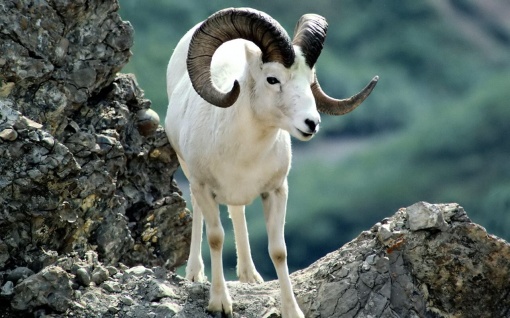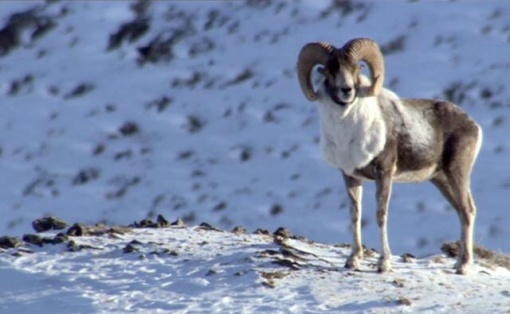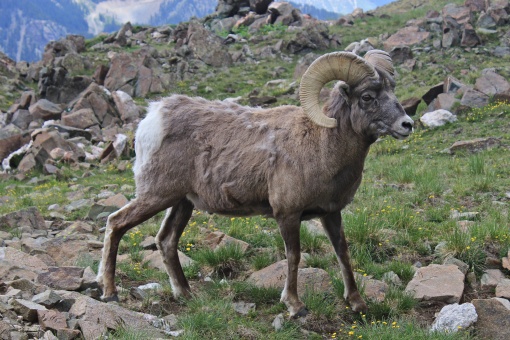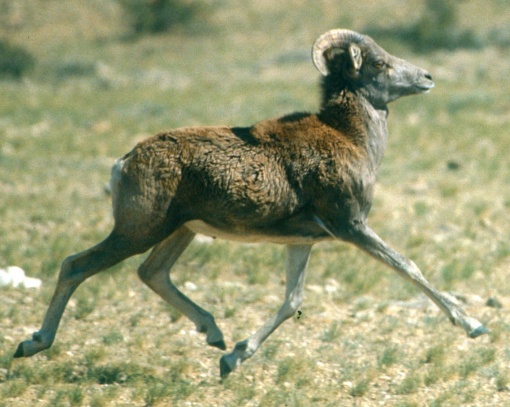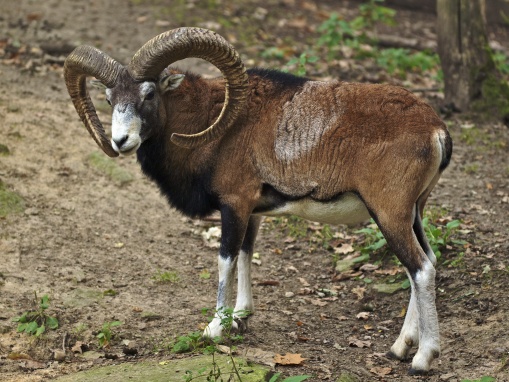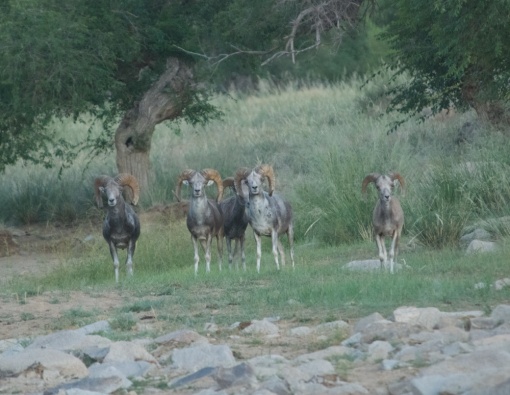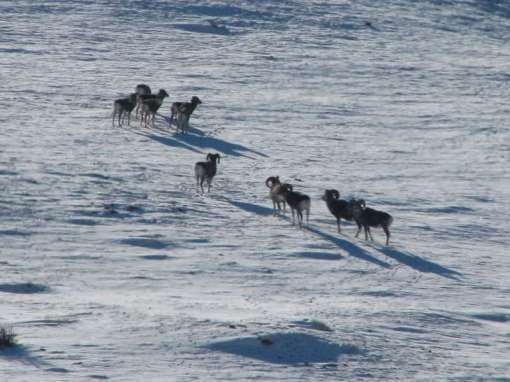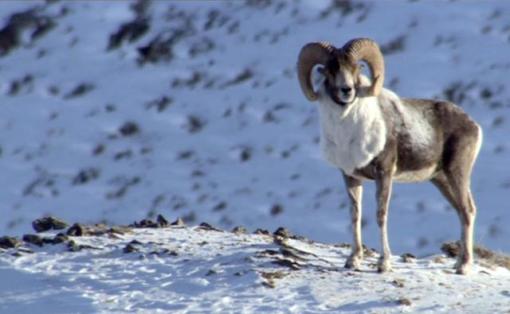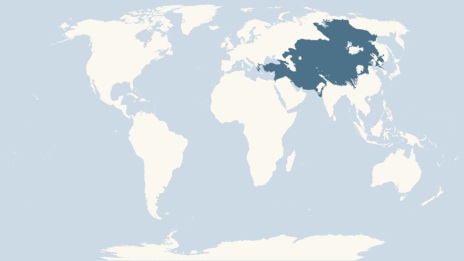The argali, or the mountain sheep (species Ovis ammon) is a wild sheep that roams the highlands of Central Asia (Himalaya, Tibet, Altay).
It is the largest species of wild sheep. The North American bighorn sheep may approach comparable weights but is normally considerably outsized by the argali. Argali stand 85 to 135 cm (3 to 4 ft) high at the shoulder and measure 136 to 200 cm (4 to 7 ft) long from the head to the base of the tail. The female or ewe is the smaller sex by a considerable margin, sometimes weighing less than half as much as the male, or ram. The ewes can weigh from 43.2 to 100 kg (95 to 220 lb) and the rams typically from 97 to 182 kg (214 to 401 lb), with a maximum reported mass of 216 kg (476 lb). The Pamir argali (also called Marco Polo sheep, for they were first described by that traveler), O. a. polii, is the largest race on average, regularly measuring more than 180 cm (5.9 ft) long without the tail, and is less sexually dimorphic in body mass than most other subspecies. The argali has relatively the shortest tail of any wild goat-antelope or sheep, with reported tail lengths of 9.5–17 cm (3.7–6.7 in).
General coloration
The general coloration varies between each animal, from a light yellow to a reddish-brown to a dark grey-brown. Argali or nyan from the Himalayas are usually relatively dark, whereas those from Russian ranges are often relatively pale. In summertime, the coat is often lightly spotted with a salt-and-pepper pattern. The back is darker than the sides, which gradually lighten in color. The face, tail and the buttocks are yellowish-white. The male has a whitish neck ruff and a dorsal crest and is usually slightly darker in color than the female. Males have two large corkscrew horns, some measuring 190 cm (6.2 ft) in total length and weighing up to 23 kg (51 lb). Males use their horns for competing with one another. Females also carry horns, but they are much smaller, usually measuring less than 50 cm (20 in) in total length.
Range and habitat
Argali range from central Kazakhstan in the west to the Shansi Province in China in the east and from the Altai Mountains in the north to the Himalayas to the south. They are a species of mountainous areas, living from elevations of 300 to 5,800 m (980 to 19,030 ft). In protected areas, the species generally prefers gently sloping areas with soft broken terrain, although ewes with lambs often take up residence in more precipitous areas, characterized by canyons and jagged rocks. In areas where they are extensively hunted (such as Kazakhstan), they are more likely to be found in forested areas. In parts of China and Russia where they compete for resources with numerous domestic stock, argali more regularly take up residence in precipitous, jagged areas. Argali may search for regions in the mountains where snow cover is not heavy during the winter, following winds that blow snow off the earth. Rams are generally found at higher elevations more regularly than females and stay at higher elevations longer during the winter.
Conservation Status
Argali are considered an endangered or threatened species throughout their entire range, due largely to habitat loss from overgrazing of domestic sheep and hunting. As the world’s largest sheep, the lure to gather a trophy specimen is strong among sports-hunters. They are hunted for both their meat and their horns, used in traditional Chinese medicine, and poaching continues to be a major (and difficultly managed) problem. Argali have been extirpated from northeastern China, southern Siberia, and parts of Mongolia. Populations of predators such as gray wolves and snow leopards have appeared to have been negatively affected by the scarcity of argali.
Argali conservation
It is possible that the sustainable management of hunting could offer some hope to the conservation of certain populations of argali. Although controversial, this practice increases the value of the species to local people, protects habitat and with careful monitoring the revenue obtained can be ploughed back into conservation. Two of the most at-risk subspecies, O. a. hodgsonii and O. a. nigrimontana, are listed on Appendix I of the Convention on International Trade in Endangered Species (CITES).
The argali (Ovis ammon) distribution map world wide.
